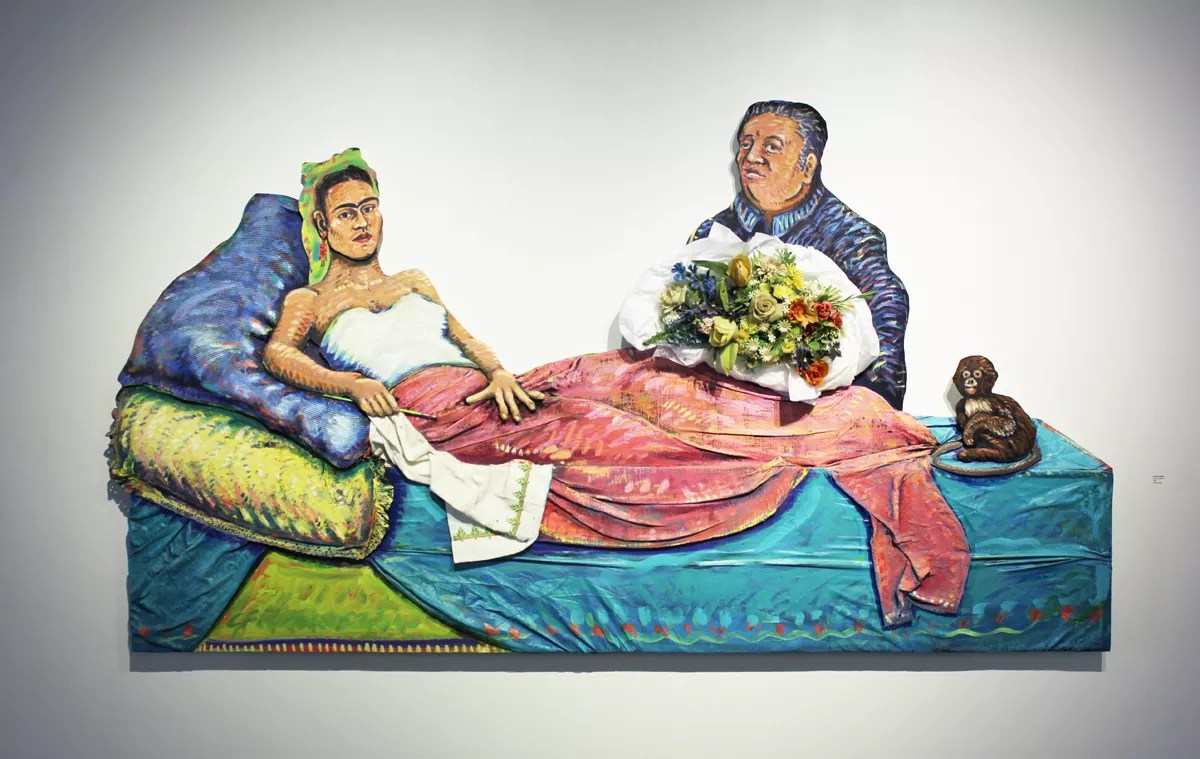
Wyatt Scott

Audio By Carbonatix
Carlos Frésquez is on just about everyone’s list of the most important contemporary artists active in Denver. Though he initially emerged in the late ’70s and early ’80s as part of the Chicano art movement that was already well established, his approach was distinctly different from that of almost all the other artists of the time. From early on, he embraced the iconographic, thematic and narrative standards of classic Chicano art while also absorbing and processing the influences of a range of non-Chicano sources, including international contemporary art as well as more historic movements, especially early European modernism.
The Center for Visual Art is now hosting Carlos Frésquez: Sangre Colorado, a gloriously over-the-top survey dedicated to the artist. The ambitious retrospective is very large, filling all the formal galleries with scores of pieces ranging from drawings and paintings to sculptures and installations. Yet even with all these works on view, the selections represent only a fraction of what Frésquez has done during his long career.
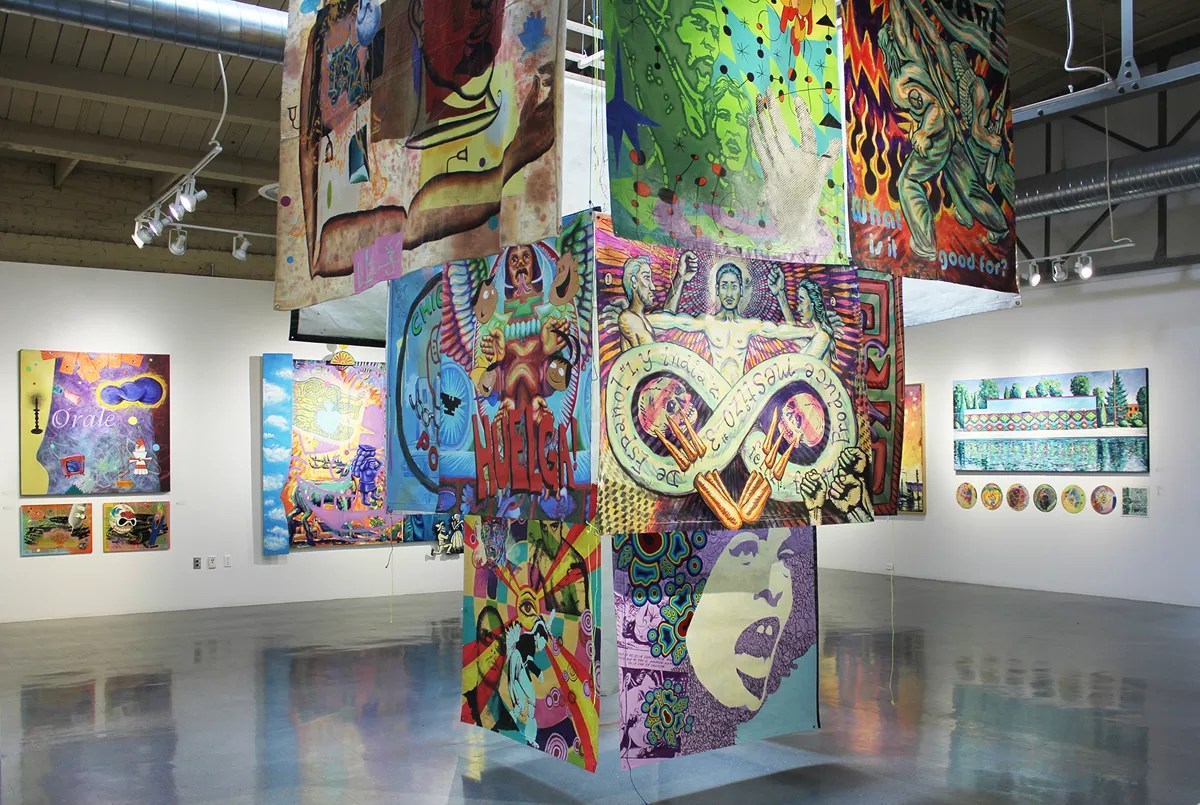
Wyatt Scott
The show’s title translates to “Colorado Blood” and symbolizes the fact that Frésquez believes Colorado is in his blood. Born in 1956, he grew up in the barrio in southwest Denver, long a center for the Chicano community, but his family had lived in southern Colorado for roughly 200 years. As a young teenager, Frésquez was swept up in the Chicano power movement spearheaded in Denver by Rodolfo “Corky” Gonzales, who’d helped to define la raza as the blending of Spanish, Mexican and indigenous heritage and customs.
Frésquez’s political activism sparked a scholarly interest in his identity as a Chicano, leading him to do research in art history, archaeology and genealogy, among other things. Through his research, he discovered that his ancestors had left Flanders, then part of the Spanish Netherlands, to settle in New Mexico in the 1600s; one of his later forebears, Pedro Antonio Fresquís (an earlier spelling of the family name), was a master artist of the santero tradition who established certain iconic devices – most notably, drapery surrounding the main imagery, as though the subject were placed on a stage. Inspired by this detail, Frésquez uses draperies in many of his pieces.

Wyatt Scott
The CVA is the perfect venue for celebrating Frésquez’s many accomplishments; even if his MFA is from the University of Colorado Boulder, he did his undergraduate work at what was then known as Metropolitan State College of Denver. The CVA, though located on Santa Fe Drive and not on the Auraria campus, is a division of Metropolitan State University of Denver, MSCD’s successor. Frésquez has taught art at Metro for nearly thirty years.
The exhibit was conceived and realized by Cecily Cullen, the CVA’s managing director and curator, and the show is quite an accomplishment, given the challenges presented by the specific nature of Frésquez’s work. From the beginning, he’s followed different paths simultaneously – dropping some, adding others, and sometimes restarting with previously abandoned approaches.

Wyatt Scott
A career survey is typically laid out chronologically, but if Cullen had done that, the placement of the individual pieces would have looked random. Instead, she’s clustered works with affinities to one another, regardless of when Frésquez made them. When I walked through the show with her, she said that organizing the material this way required a lot of last-minute shifting, and that some sections had given her a lot of trouble before she could resolve them. But the effort was clearly worth it, since the show not only gives viewers a good idea of the immense number of ideas Frésquez has been juggling, but offers an expansive overview that actually makes sense out of the apparent visual chaos.
The scope of Frésquez’s career is laid out immediately in the window gallery. On the south side are the expected Chicano pieces, including “Cool Couple” from the ’80s, one of the first works in which Frésquez used international stylistic characteristics to convey Chicano content – in this case, neo-pop with resonances of Robert Rauschenberg, Jim Dine and Keith Haring. And even when he fully embraces the mainstream of Chicano art, as he does in two zoot-suit paintings – one depicting his father and one of himself – Frésquez carries it out with highly expressive brushwork that hides the details.
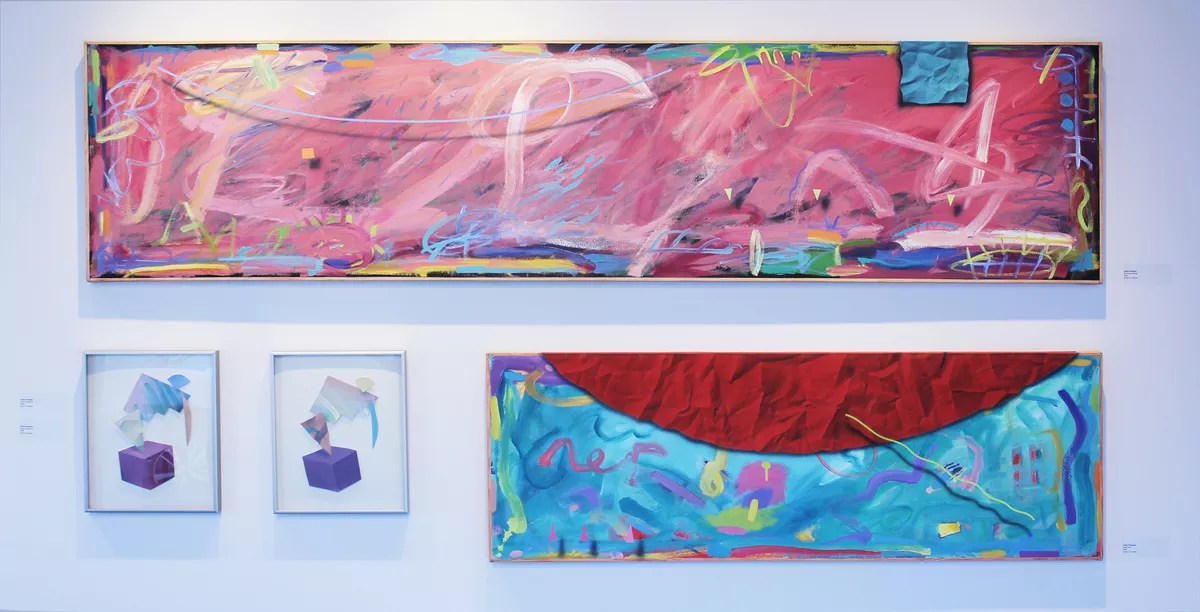
Wyatt Scott
Opposite this identity section are some very unexpected works: non-objective formalist abstracts. I’ve been aware of Frésquez for over twenty years, and I had no idea he did abstracts. Not only that, but he’s done a couple hundred of them, and they’re great! Interestingly, Frésquez sees them as also having Chicano content, because he was trying to develop an indigenous abstraction, following in the footsteps of James Havard, the Native American abstractionist. Another reference to identity in these abstracts are the wedges or arcs that serve the same function as the draperies in more representational works.
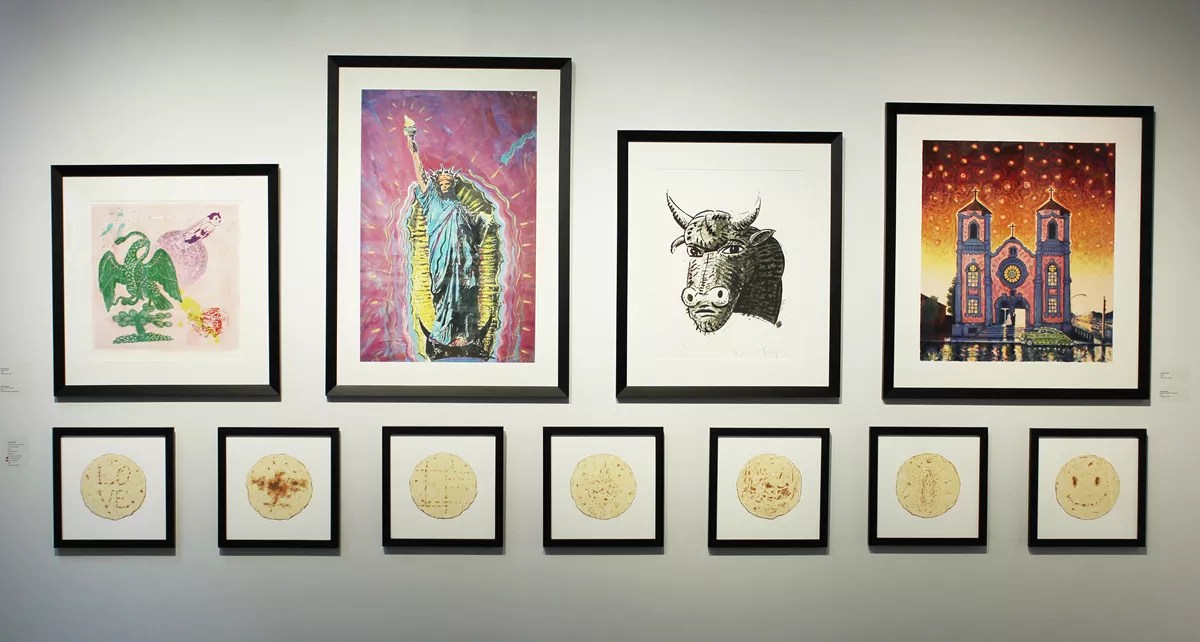
Wyatt Scott
The show reveals that it all came together for Frésquez in the 1990s, when he synthesized the many things he’d been pulling out of visual culture. Not only was he responding to contemporary neo-pop, expressionism and formalist abstraction, but he was looking to the past: at impressionism, cubism and abstract expressionism. Even more significant, Frésquez was bringing in comic books, corporate logos and TV cartoon characters, adding them to a Chicano-derived set of references that included Our Lady of Guadalupe, hot-rod jalopies, churches, eagles, snakes and skulls.
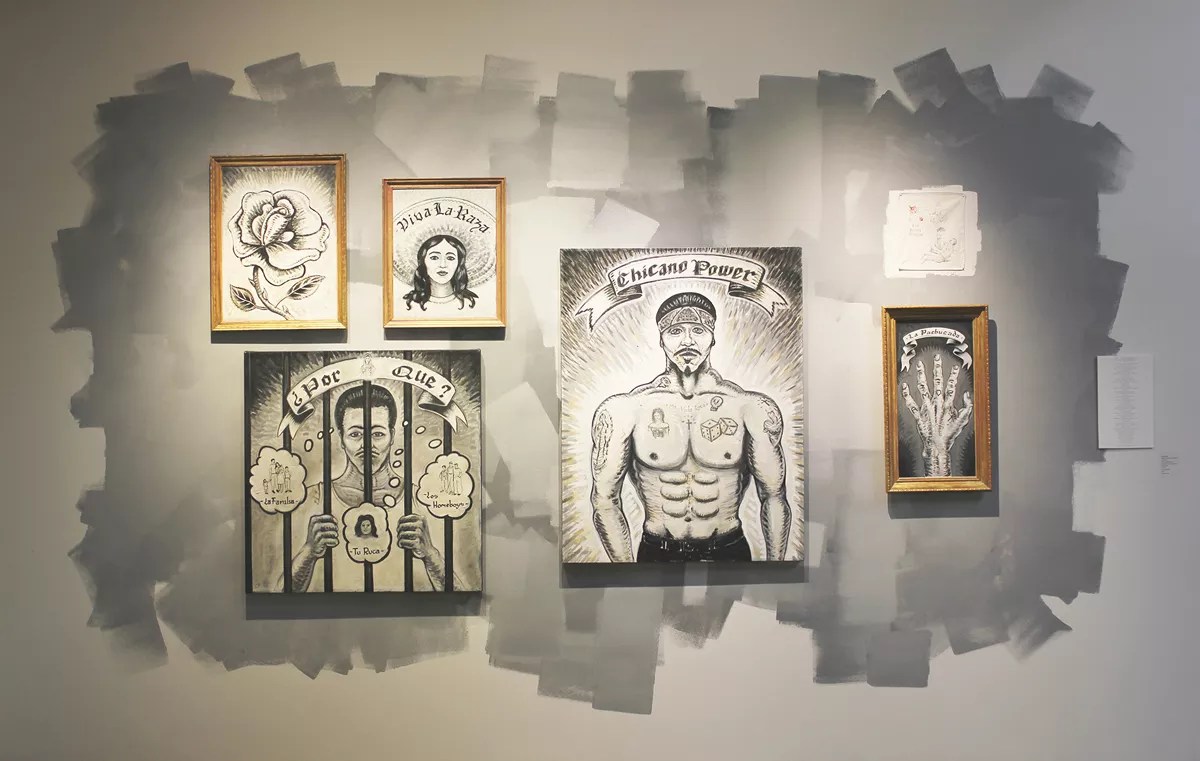
Wyatt Scott
This led to pieces as outrageous as “Obsidian Ranfla #3,” in which a ’50s Chevy is laid on an Aztec pattern along with the Frito Bandito and Bender, the robot from Futurama. This transgressive sensibility is also seen in the spectacular and enormous painting installation credited to Los Supersónicos, an artist pair comprised of Frésquez and Francisco Zamora (and what The Jetsons is called in Latin America). Familiar characters from The Jetsons are seen in a number of other pieces, including renditions of Jane, George and Elroy, who becomes “El Roy” (a play on “el rey,” Spanish for “the king”) when pictured on a tarot card. It is in these ways that Frésquez takes traditional Chicano art and transforms it into a conceptual, post-Chicano style.
The first time I ever saw work by Carlos Frésquez was in 1996, when he was a member of Edge. It was an installation called “Lágrima/Teardrop,” about Chicano gang members; I still remember it, and I’ve taken in hundreds of shows since then. Although that installation is not included in Sangre Colorado, the paintings that were part of it are, and seeing them again brought the whole piece back after more than twenty years.
There are dozens of heart-stopping moments in Sangre Colorado, far too many to single out. While we’re only in the first month of 2018, this salute to Frésquez is certain to be one of the most significant shows of the year.
Carlos Frésquez: Sangre Colorado through March 24 at the MSUD Center for Visual Art, 965 Santa Fe Drive, 303-294-5207, cva@msudenver.edu.